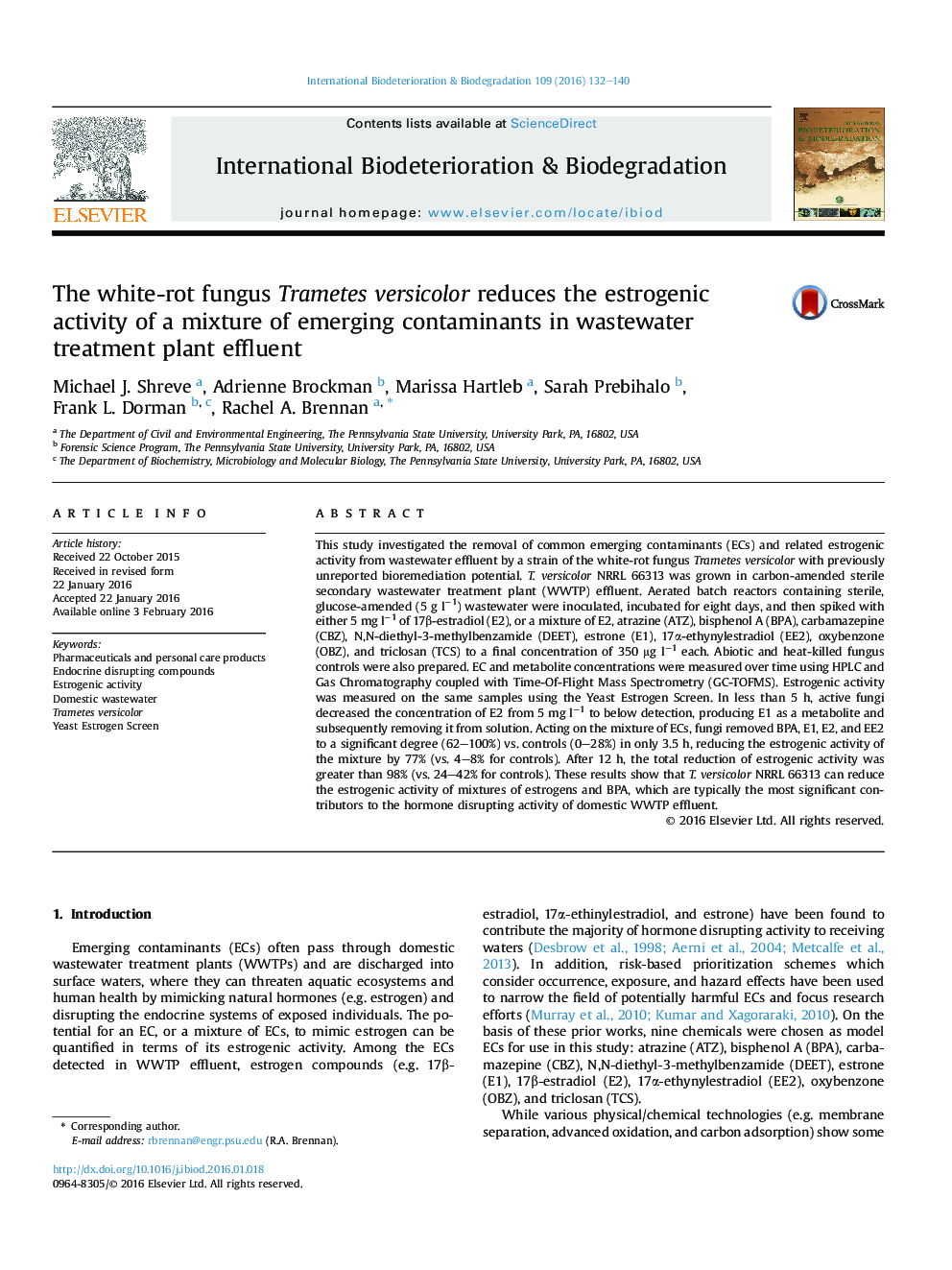| کد مقاله | کد نشریه | سال انتشار | مقاله انگلیسی | نسخه تمام متن |
|---|---|---|---|---|
| 4364272 | 1616308 | 2016 | 9 صفحه PDF | دانلود رایگان |

• Cultures of Trametes versicolor in nutrient media and wastewater were compared.
• Wastewater cultures grew, produced enzymes, and removed emerging contaminants.
• The estrogenic activity of the wastewater was reduced by > 98% in 12 h.
• Estrogenic activity removal correlated with removal of estrogens and bisphenol A.
• This is the first report on the bioremediation potential of strain NRRL 66313.
This study investigated the removal of common emerging contaminants (ECs) and related estrogenic activity from wastewater effluent by a strain of the white-rot fungus Trametes versicolor with previously unreported bioremediation potential. T. versicolor NRRL 66313 was grown in carbon-amended sterile secondary wastewater treatment plant (WWTP) effluent. Aerated batch reactors containing sterile, glucose-amended (5 g l−1) wastewater were inoculated, incubated for eight days, and then spiked with either 5 mg l−1 of 17β-estradiol (E2), or a mixture of E2, atrazine (ATZ), bisphenol A (BPA), carbamazepine (CBZ), N,N-diethyl-3-methylbenzamide (DEET), estrone (E1), 17α-ethynylestradiol (EE2), oxybenzone (OBZ), and triclosan (TCS) to a final concentration of 350 μg l−1 each. Abiotic and heat-killed fungus controls were also prepared. EC and metabolite concentrations were measured over time using HPLC and Gas Chromatography coupled with Time-Of-Flight Mass Spectrometry (GC-TOFMS). Estrogenic activity was measured on the same samples using the Yeast Estrogen Screen. In less than 5 h, active fungi decreased the concentration of E2 from 5 mg l−1 to below detection, producing E1 as a metabolite and subsequently removing it from solution. Acting on the mixture of ECs, fungi removed BPA, E1, E2, and EE2 to a significant degree (62–100%) vs. controls (0–28%) in only 3.5 h, reducing the estrogenic activity of the mixture by 77% (vs. 4–8% for controls). After 12 h, the total reduction of estrogenic activity was greater than 98% (vs. 24–42% for controls). These results show that T. versicolor NRRL 66313 can reduce the estrogenic activity of mixtures of estrogens and BPA, which are typically the most significant contributors to the hormone disrupting activity of domestic WWTP effluent.
Journal: International Biodeterioration & Biodegradation - Volume 109, April 2016, Pages 132–140